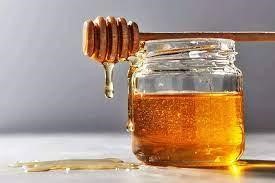 Sundarban Honey, is a unique and prized product harvested from the dense, wild forests of the Sundarbans, the world’s largest mangrove ecosystem, spread across West Bengal, India, and Bangladesh. Since 2024, this golden nectar has been officially recognized as a Geographical Indication (GI) product, signifying its regional authenticity, distinct flavor, and traditional collection methods.
Sundarban Honey, is a unique and prized product harvested from the dense, wild forests of the Sundarbans, the world’s largest mangrove ecosystem, spread across West Bengal, India, and Bangladesh. Since 2024, this golden nectar has been officially recognized as a Geographical Indication (GI) product, signifying its regional authenticity, distinct flavor, and traditional collection methods.
Collected from the deep mangrove forests within the South 24 Parganas and North 24 Parganas districts of West Bengal, India, and the Khulna, Satkhira, and Bagerhat districts of Bangladesh, Sundarban Honey is more than just a sweet treat. It is the result of a centuries-old relationship between the honey collectors, known as Moules or Moulis, and the mangrove bees that thrive in this unique ecosystem. During the honey collection season, which spans from March to May, these brave collectors venture into the heart of the forest to retrieve honey from the wild Apis dorsata bees, often working in small groups, much like their ancestors.
The rich biodiversity of the Sundarbans provides an array of nectar from different mangrove flowers, giving the honey its distinct flavors and colors. Most commonly, Sundarban Honey has a golden hue, but darker variations, such as red and brown honey, are also found, depending on the specific floral sources and the time of collection.
For the Moules, honey collection is a traditional occupation deeply ingrained in their culture. Every year, from late March to early June, when fishing is restricted in the region, honey collection becomes a crucial activity for sustaining livelihoods. The honey cycle begins when the rock bees arrive in the Sundarbans during Magh (January-February) and ends with their departure in Ashar (July). As they build their hives and store the nectar from the mangrove blossoms, the forests come alive with the buzzing activity of nature’s finest pollinators.
Historically, the collection of Sundarban Honey can be traced back to the colonial era, when the East India Company started exploiting forest products like honey and wax for commercial gain. Even today, honey collection remains a key source of income for many in the region, supporting entire communities.
In November 2023, the recognition of ‘Sundarban Mouban Honey’ with the Geographical Indication (GI) tag marked a new chapter for the local honey collectors. This prestigious recognition not only boosts the credibility and market value of the honey but also ensures that the traditional, sustainable methods of collection are preserved. For the Moules, this has been a game changer, increasing the price they fetch for their honey and elevating the product’s reputation on a global scale.
With the GI tag, Sundarban Honey is now seen as a symbol of sustainable livelihood and biodiversity conservation, promoting the importance of protecting the fragile mangrove ecosystem while also providing a steady source of income to the local communities.
Whether for its unique taste, its connection to the mystical Sundarbans, or its role in supporting traditional livelihoods, Sundarban Honey is more than just a product—it’s a story of harmony between nature and humanity. As it continues to gain international recognition, the future looks brighter for the Moules and their invaluable craft.






